1. Baxevanis CN, Sotiropoulou PA, Sotiriadou NN, Papamichail M. Immunobiology of HER-2/neu oncoprotein and its potential application in cancer immunotherapy. Cancer Immunol Immunother. 2004; 53:166–175. PMID:
14685781.
2. Ryu DW, Lee CH. Impact of serum HER2 levels on survival and its correlation with clinicopathological parameters in women with breast cancer. J Breast Cancer. 2012; 15:71–78. PMID:
22493631.

3. Slamon DJ, Clark GM, Wong SG, Levin WJ, Ullrich A, McGuire WL. Human breast cancer: correlation of relapse and survival with amplification of the HER-2/neu oncogene. Science. 1987; 235:177–182. PMID:
3798106.
4. Andrulis IL, Bull SB, Blackstein ME, Sutherland D, Mak C, Sidlofsky S, et al. Toronto Breast Cancer Study Group. neu/erbB-2 amplification identifies a poor-prognosis group of women with node-negative breast cancer. J Clin Oncol. 1998; 16:1340–1349. PMID:
9552035.
5. Nahta R, Yu D, Hung MC, Hortobagyi GN, Esteva FJ. Mechanisms of disease: understanding resistance to HER2-targeted therapy in human breast cancer. Nat Clin Pract Oncol. 2006; 3:269–280. PMID:
16683005.

6. Duffy MJ. Serum tumor markers in breast cancer: are they of clinical value? Clin Chem. 2006; 52:345–351. PMID:
16410341.

7. Harris L, Fritsche H, Mennel R, Norton L, Ravdin P, Taube S, et al. American Society of Clinical Oncology 2007 update of recommendations for the use of tumor markers in breast cancer. J Clin Oncol. 2007; 25:5287–5312. PMID:
17954709.

8. Baskić D, Ristić P, Matić S, Banković D, Popović S, Arsenijević N. Clinical evaluation of the simultaneous determination of CA 15-3, CA 125 and sHER2 in breast cancer. Biomarkers. 2007; 12:657–667. PMID:
17852076.

9. Fehm T, Jäger W, Krämer S, Sohn C, Solomayer E, Wallwiener D, et al. Prognostic significance of serum HER2 and CA 15-3 at the time of diagnosis of metastatic breast cancer. Anticancer Res. 2004; 24(3B):1987–1992. PMID:
15274389.
10. Cook GB, Neaman IE, Goldblatt JL, Cambetas DR, Hussain M, Lüftner D, et al. Clinical utility of serum HER-2/neu testing on the Bayer Immuno 1 automated system in breast cancer. Anticancer Res. 2001; 21(2B):1465–1470. PMID:
11396233.
11. Schwartz MK, Smith C, Schwartz DC, Dnistrian A, Neiman I. Monitoring therapy by serum HER-2/neu. Int J Biol Markers. 2000; 15:324–329. PMID:
11192828.

12. Gerhardt W, Keller H. Evaluation of test data from clinical studies. I. Terminology, graphic interpretation, diagnostic strategies, and selection of sample groups. II. Critical review of the concepts of efficiency, receiver operated characteristics (ROC), and likelihood ratios. Scand J Clin Lab Invest Suppl. 1986; 181:1–74. PMID:
3460162.
13. Molina R, Zanón G, Filella X, Moreno F, Jo J, Daniels M, et al. Use of serial carcinoembryonic antigen and CA 15.3 assays in detecting relapses in breast cancer patients. Breast Cancer Res Treat. 1995; 36:41–48. PMID:
7579505.

14. Pedersen AC, Sørensen PD, Jacobsen EH, Madsen JS, Brandslund I. Sensitivity of CA 15-3, CEA and serum HER2 in the early detection of recurrence of breast cancer. Clin Chem Lab Med. 2013; 51:1511–1519. PMID:
23403727.

15. Sugano K, Ushiama M, Fukutomi T, Tsuda H, Kitoh T, Ohkura H. Combined measurement of the c-erbB-2 protein in breast carcinoma tissues and sera is useful as a sensitive tumor marker for monitoring tumor relapse. Int J Cancer. 2000; 89:329–336. PMID:
10956406.

16. Molina R, Jo J, Filella X, Zanón G, Farrus B, Muñoz M, et al. C-erbB-2, CEA and CA 15.3 serum levels in the early diagnosis of recurrence of breast cancer patients. Anticancer Res. 1999; 19(4A):2551–2555. PMID:
10470193.
17. Molina R, Jo J, Filella X, Bruix J, Castells A, Hague M, et al. Serum levels of C-erbB-2 (HER-2/neu) in patients with malignant and non-malignant diseases. Tumour Biol. 1997; 18:188–196. PMID:
9143415.

18. Motoo Y, Sawabu N, Yamaguchi Y, Mouri I, Yamakawa O, Watanabe H, et al. Serum levels of c-erbB-2 protein in digestive diseases. J Gastroenterol. 1994; 29:616–620. PMID:
7528080.

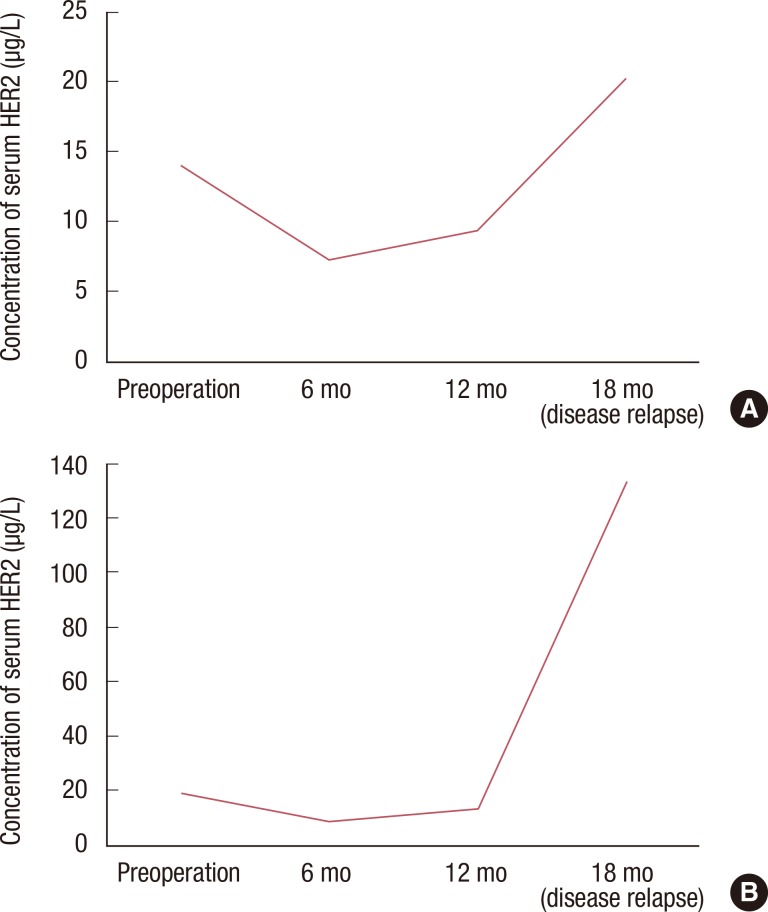
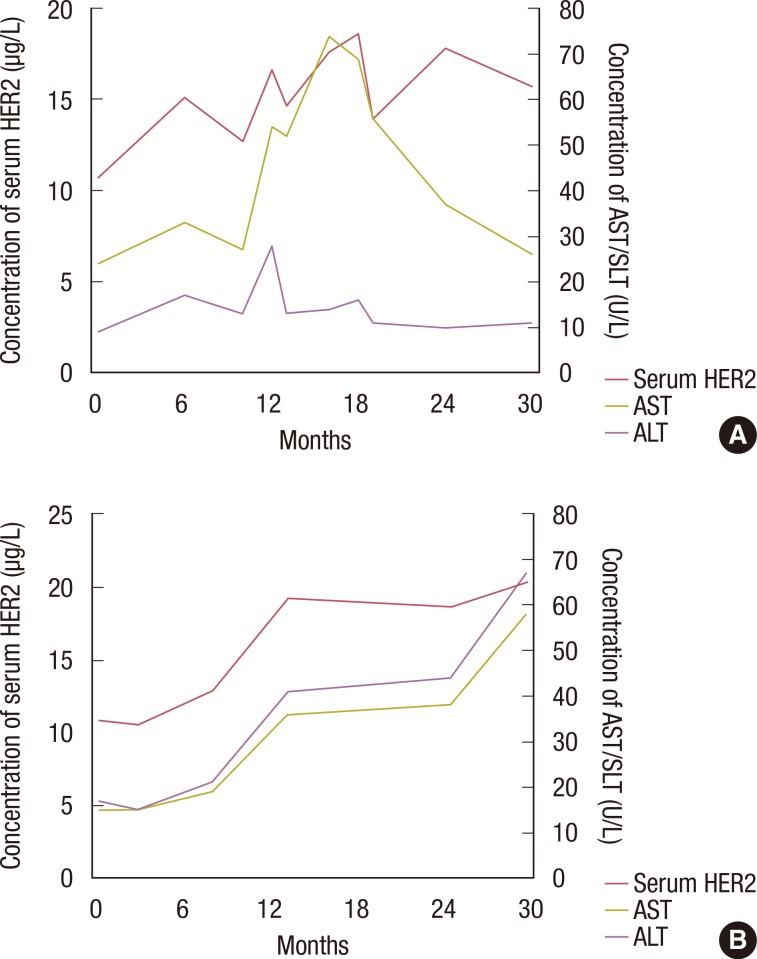
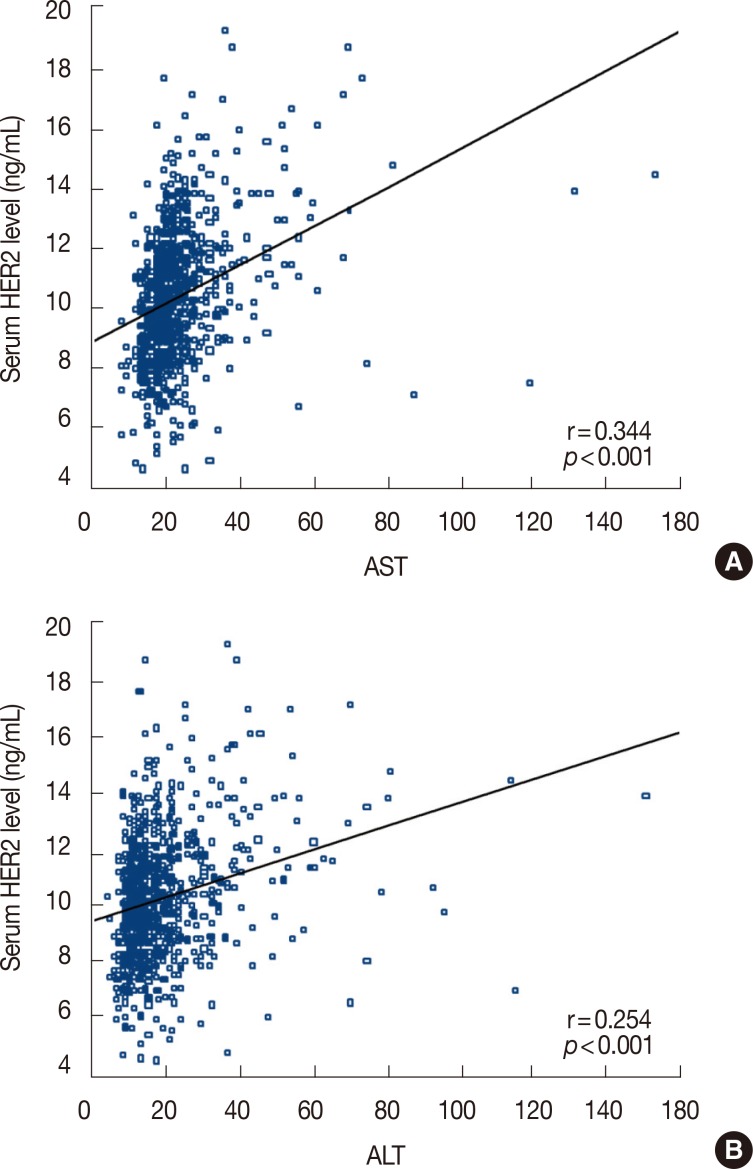
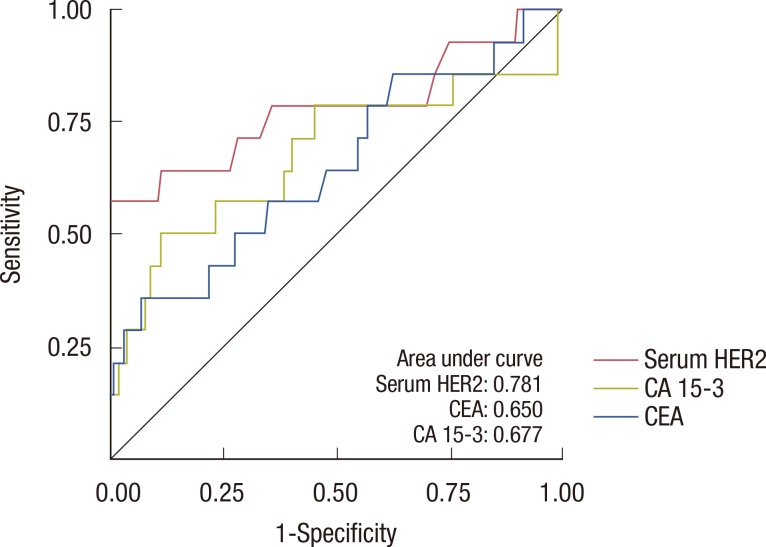




 PDF
PDF ePub
ePub Citation
Citation Print
Print


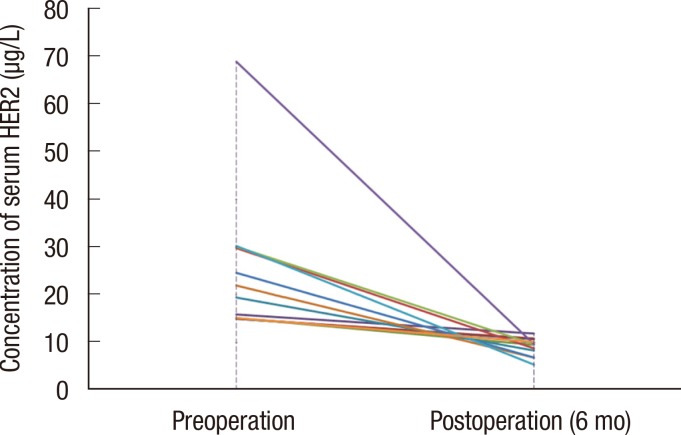
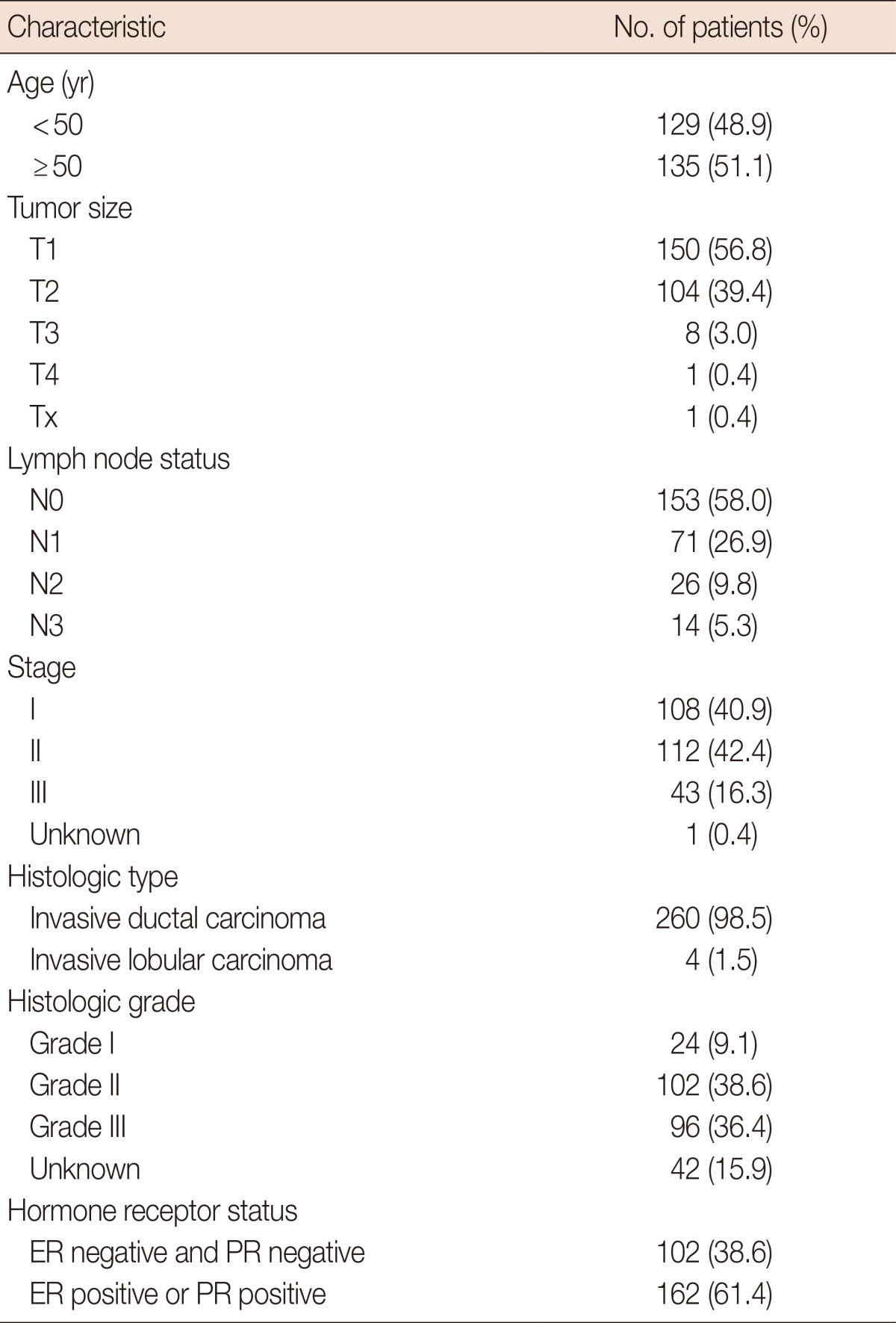
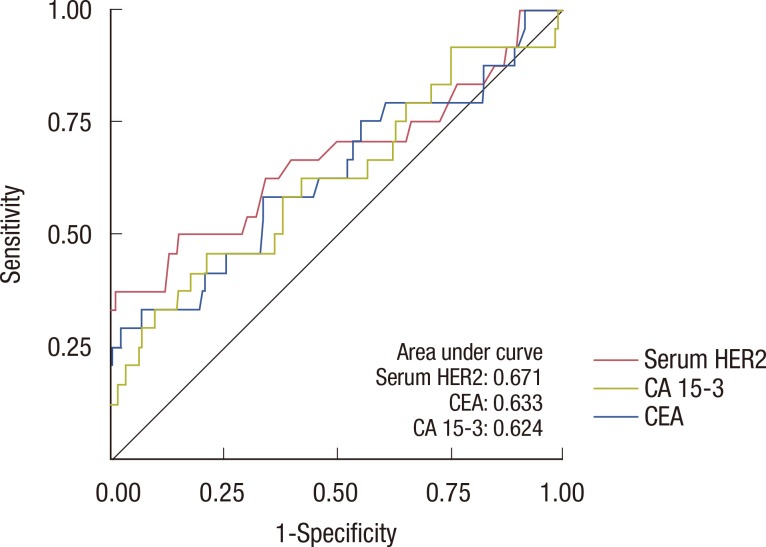
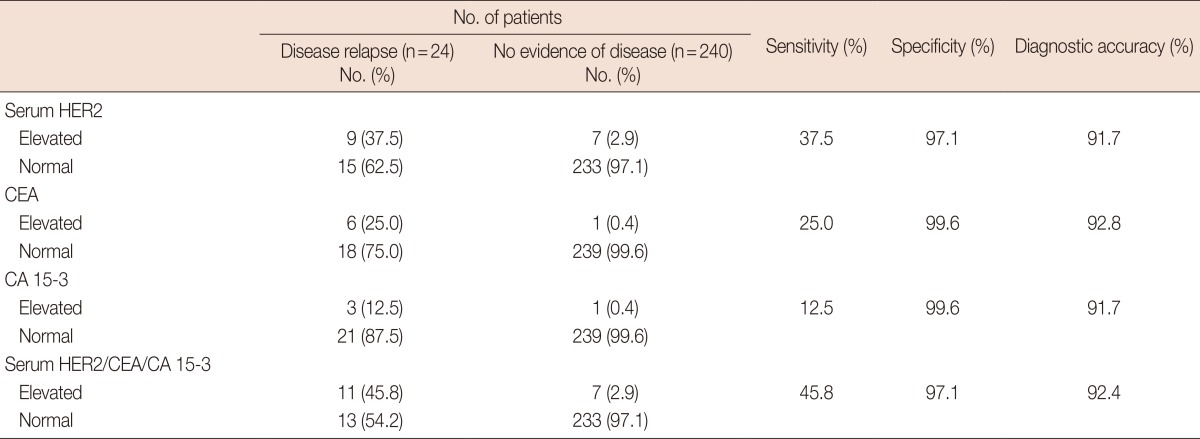
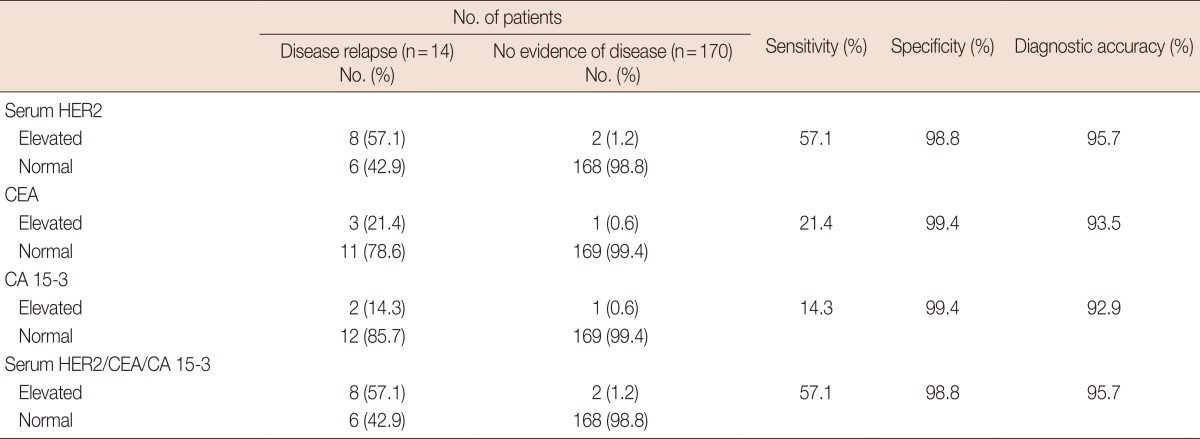
 XML Download
XML Download